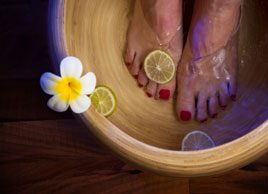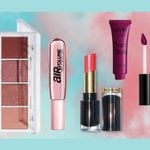How to stay healthy at the salon
In Canada, public health inspections of salons and spas are not the norm. Here’s what you need to know to stay healthy and safe

Source: Best Health Magazine, Summer 2011
How do you know whether the spa or beauty salon that you go to is following good safety, hygiene and infection control procedures?
Here are some tips from Leading Spas of Canada (LSC) as well as the U.S. Environmental Protection Agency for what to look for at a spa, or questions to ask when booking:
‘ Does the spa ask you to complete an intake form prior to your treatment? Are you asked about health concerns like diabetes? These are critical steps to ensuring that any contraindications for spa treatments are identified and addressed.
‘ Is the spa clean? Can you see dust balls in corners? How clean are the bathrooms? Are the instruments organized and placed on ‘a clean towel, or in bags to prevent them coming into contact with a contaminated surface? Look for indicators that the spa is following hygiene and sterilization procedures. And if in doubt, ask!
‘ Massage tables, linens and rooms should appear to be very clean. Massage-table linens need to be changed after each client.
‘ Is information about standards and practices displayed in the spa or on its website?
‘ Does the spa welcome questions about sanitation processes?
‘ If you share a communal hot tub, hot springs or Japanese-like bath, all patrons should be required to shower with soap and water first.
‘ The esthetician should wash her hands before every procedure.
Pedicure and manicure precautions
Pedicures have high potential to transmit infections, but manicures can be risky, too.
‘ Do not shave your legs within 24 hours of a pedicure, as this may create microscopic cuts where bacteria can enter.
‘ Do not have a pedicure if you have any evidence of athlete’s foot, fungal infection or open sores on your legs or feet. People with diabetes should consult their doctor before having a pedicure because of a tendency to have poor circulation and damaged nerve sensations.
‘ Does the esthetician examine your feet and lower legs (pedicure), or your hands (manicure), before starting?
‘ Ask how foot baths are sanitized. They should be cleaned and disinfected between every client. Cleaning means washing with soap and water to remove all visible debris. Disinfecting is the use of a chemical solution that destroys pathogens.
‘ Does the esthetician wear fresh disposable gloves when working on your feet?
‘ Mani/pedi utensils should be cleaned and sterilized in an autoclave, with ultraviolet light or with disinfectant. Some spas use single-use nail files and buffing squares, which they give to the client to take home.
‘ Consider requesting that your cuticles not be trimmed during the manicure or pedicure, as this can nick the skin.
‘ Do not allow the esthetician to shave corns and thick heel skin with a razor-based instrument. That’s now illegal in Canada.
Waxing precautions
Hot wax for removing eyebrow, bikini, leg and underarm hair can be a source of both uncomfortable burns and infection. Following these general safety tips can help ensure you don’t contract a spa-induced infection or injury. You may have an infection if the area treated becomes tender and swollen. Do not ignore this’see your doctor, who might prescribe an antibiotic. Be sure to wash with soap and water at home before the waxing. Tell the esthetician about any areas with broken or irritated skin; this should not be waxed. And watch for:
‘ Does the esthetician first swab the area to be waxed with alcohol?
‘ Does the vat of wax look clean? A communal vat of wax is safe if the esthetician does not double-dip with the same stick that applies the wax. A new wooden stick should be used for each application of the wax’so multiple sticks are necessary for each job.
‘ To ensure you don’t get burned, the esthetician should first test the temperature of the wax on the inside of her arm.
**Correction: "Summer salon safety" [Summer 2011, page 36] stated that razor-based instruments are illegal in Canada for use on corns and thick heel skin. In fact, "credo blades" (although illegal in many U.S. states) are not prohibited federally. Al Peters of Canada’s Allied Beauty Association says: "Salons and spas are regulated provincially and inspected by municipal health officers. It’s not uncommon for inspectors to advise against the use of blades. And under no circumstances should they be used on customers with diabetes."
Gaye Cail of the Cosmetology Association of New Brunswick says that in her province, "estheticians are trained to recommend that clients seek medical professional help with corns."
This article was originally titled "Summer salon safety" in the Summer 2011 issue of Best Health. Subscribe today to get the full Best Health experience’and never miss an issue!




